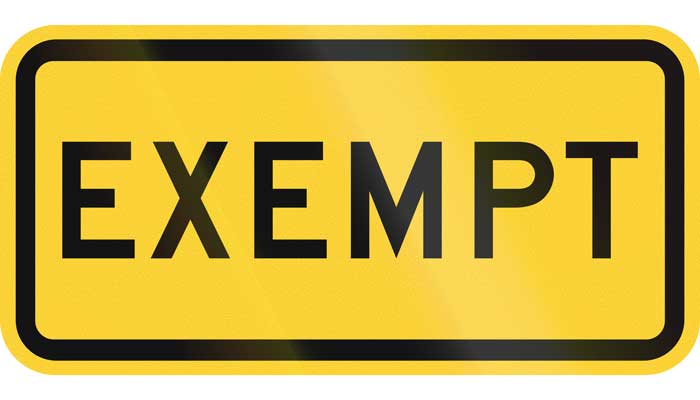There’s no denying that a VA loan is often the best home mortgage loan available for those who qualify. It usually requires no down payment, has lower rates than traditional loans, and assists veterans and active duty military personnel who couldn’t get a home loan otherwise.
A VA loan has all the same closing costs a traditional loan does, but there is a cost that is unique to these loans – one that catches many borrowers by surprise. This fee, known as a funding fee, brings up many questions. What does the fee pay for? Does it have to be paid in cash? Is it tax deductible?
Here’s a look at everything you need to know about funding fees.
The VA Loan Funding Fee
Every loan the VA backs includes a funding fee which goes directly to the VA to help cover the small number of loans that go into default. A funding fee gives the lender a little more security on their loan, which in turn makes them more willing to make the concessions to the VA before offering these loans. Concessions include a lower credit score requirement, loans initiated shortly after a bankruptcy filing, and allowances for a higher debt ratio.
Borrowers have the choice to either pay the fee up front or to include the cost of their monthly mortgage payment. Most people choose to roll the fee into their monthly mortgage loan payments.
As with other closing costs involved with a VA loan, the funding fee can be paid by the seller instead of being added to the loan value, as long as it doesn’t exceed four percent of the loan’s value.
How to Calculate a VA Loan Funding Fee
A VA loan funding fee is a percentage of the total loan value. This percentage changes depending on several factors, including the service member’s status, down payment amount, whether they were a reservist or National Guard member, the length of the veteran’s service, and whether the borrower has taken out a VA loan before.
Here are some figures to help you calculate how much you’ll pay for a VA loan funding fee. If you want just a ballpark estimate, figure about $2,000 for every $100,000 borrowed.
Regular military members
-
With no down payment, the funding fee is 2.15 percent for the first use and 3.3 percent for any subsequent use
-
With a five to 10 percent down payment, the funding fee is 1.5 percent for the first use and 1.5 percent for any subsequent use
-
With a 10 percent down payment, the funding fee is 1.25 percent for the first use and 1.25 percent for any subsequent use
Reservist and National Guard members
-
With no down payment, the funding fee is 2.4 percent for the first use and 3.3 percent for any subsequent use
-
With a five to 10 percent down payment, the funding fee is 1.75 percent for the first use and 1.75 percent for any subsequent use
-
With no down payment, the funding fee is 1.5 percent for the first use and 1.5 percent for any subsequent use
*(all data taken from the VA’s funding fee table)

Funding Fees on Loan Refinance
The funding fee also extends to veterans who are refinancing a current home loan. Two refinancing options are available, the VA Streamline (also called the Interest Rate Reduction Refinancing Loan) and the VA Cash-Out, with each one carrying different fees.
A VA Streamline loan requires a 0.5 percent funding fee regardless of status or subsequent use.
A VA Cash-Out refinance loan has a 2.15 percent fee for first time regular military and a 3.3 percent fee for regular military using the program subsequent times, and a 2.4 percent fee for reservists or National Guard members using the program for the first time. There is a 3.3 percent fee for reservists or National Guard members using it a subsequent time.
Who is Exempt From a VA Loan Funding Fee?
The funding fee has a few exceptions. According to the VA rules, the following scenarios can exempt someone from a VA funding fee:
-
-
Receiving VA disability benefits
-
Being eligible to receive disability benefits through the VA, but receiving VA retirement benefits instead
-
Being eligible to receive disability benefits through the VA as a result of a exam and rating prior to discharge
-
Eligible to receive VA disability benefits but re-enlisting or being recalled to active duty
-
Being the surviving spouse of a military veteran who died in service or died from service-related disabilities
-

As a general rule, a veteran who is at least 10 percent disabled is eligible to have their fee waived.
Even if you do have a situation that falls in one of these categories, it’s important to note that the exemption is not automatically applied to your loan. You’ll need to claim it yourself, which is something your lender will usually help you do. To help you plan, here’s what you will need to file a VA funding fee exemption:
-
A signed VA Form 26-8937 form (or Verification of VA Benefits form)
-
For someone who is disabled, a copy of the original VA notice of disability (with rating) and documentation of the service member’s retirement income
-
A Certificate of Eligibility stating the loan borrower is entitled as an unmarried surviving spouse of a service member
The VA does have the final word on eligibility, and people are handed on a case by case basis. If you’re not sure if you qualify to have your VA loan funding fee waived, contact a loan VA rep for clarity.
Can a VA Loan Funding Fee be Refunded if the Borrower’s Status Changes?
Some scenarios result in a refund of the funding fee if a veteran or service member’s status changes or cannot be determined between the time the loan paperwork is submitted and they close on the home.
The VA speaks directly to this issue saying that if a veteran’s exempt status is unverified, they should pay the fee as if they were not exempt, and the VA will refund the fee if appropriate. The VA loan handbook adds that if a veteran has a pending disability claim, the fee must be paid, and the borrower must ask the VA Regional Loan Center for a refund retroactively once that claim is approved.
In short, if your funding fee exemption is going to change after you file your paperwork but before you close on the home, you’ll need to pay the fee and sort out your refund later. Once you officially close on your home, there can be no funding fee refunds regardless of status change.
Like a funding fee exemption, a refund of the fee is not automatic, and the borrower is expected to initiate the process.
One positive about the funding fee
The good news is that the VA loan funding fee is entirely tax deductible. Since it is a form of mortgage insurance, you can take entire amount you pay as a deduction on your annual income taxes. Around February of the year after you make the payment, you’ll receive an IRS Form 1098 that discloses the entire amount you paid.
VA Loan Funding Fees: Not a Deal Breaker
VA loans do come with fewer costs and fees than traditional loans, but it’s important to be aware of the funding fee. The fee in no way makes the VA loan a poor deal nor does it negate the many benefits of a VA loan, but it catches many borrowers off guard. When budgeting for your new mortgage payment, be sure you plan for your funding fee.


